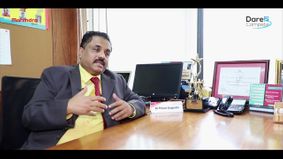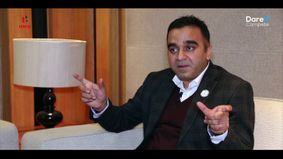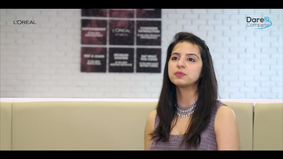L'Oréal Brandstorm 2026
Campus Recruitment Process: Here's everything you need to know

The placement process is broadly divided into two categories:
- On-campus placement drive
- Off-campus placement drive
On-campus Placement Drive
These drives are conducted on campus, reducing your effort of having to visit companies for placement drives. Colleges often have placement committees which are responsible for the companies coming on-campus. These companies have their own processes, most of which have the basic steps of pre-placement talks, aptitude and technical test, group discussions and personal interviews.

Off-campus Placement Drive
Unlike the on-campus drive, the recruitment process of various companies is conducted off the bounds of your college campus. They most often take place in a common place which has space enough to accommodate a number of students. Also called Pool-campus drives, students from different colleges visit the location provided in the details of the drive. Further processes take place there. The level of competition is generally way higher in off-campus drives than in the former because of the number of candidates who sit for the placement drive.
Every company lists their eligibility criteria for the various profiles on offer. Along with that, the various steps of the placement process are declared beforehand too. Now that we know the two primary types of placement drives, let us take a quick sneak peek into what the campus placement drives entail. The general procedure comprises the following steps:
- The pre-placement talk: An introduction of the company
- Aptitude/ Technical/ Psychometric test: Based on the profile being offered, this is meant to test the candidate’s presence of mind and technical knowledge.
- Group Discussion: Conducted by specific companies, group discussions are meant to shortlist candidates on the basis of their confidence and the ideas presented by them.
- Interview: The HR/ technical interview, based on the profile offered, is the last step of the campus recruitment process.
Each of these steps is discussed in detail below.
The Pre-Placement Talk
The first step of the placement process, this is where you get to know what the company is about, their history, the services or products they provide and their major accomplishments. This step gives you an insight into the crucial details of the company. During interviews, recruiters might ask questions in regard to their company, deliberately, to merely check how attentive you have been.
This step also allows you to clarify questions you have in mind regarding the job profile, location and other HR-related queries. You’ll get to know about the service bonds, if any, the company has, in addition to whether or not the profile on offer is in the sector of your interest.
Aptitude/ Technical/ Psychometric test
Designed to judge students on grounds of their quantitative ability, logical reasoning and verbal abilities, Aptitude tests are easy and generally require logic to be cracked. However, at times, the simplicity of the questions leads to higher cut-offs. The candidates who have been preparing for entrance exams like that of CAT or SBI PO have better chances of clearing the test than the rest. So, practising for the aptitude test beforehand is always beneficial. Also, to nail the test effortlessly, it is better to enquire about the format of the test. Technical tests, on the other hand, are meant to judge the candidate’s calibre on grounds of their core subject knowledge. These tests also check whether or not they are fit for the said role.
Another popular test conducted these days is the Psychometric test. The employer's way to judge the emotional quotient of the prospective employee, such tests help recruiters understand how the said candidate will respond in certain situations. This gives them an idea of how suitable the candidate is for the role on offer.
Group Discussion
Where aptitude and technical tests directly judge the student’s potential in terms of their proficiency, group discussions are designed to test the candidate’s confidence, their knowledge of subjects beyond the syllabus, the ideas they present and their reaction to contradicting opinions. Not conducted by many companies, GD is primarily conducted to shortlist candidates from a list of many. The discussion typically lasts for about 20-30 minutes and is monitored by a panel of 3 or more experts. Content plays a vital role during the GD. Focus on what you speak and make sure you add valid points.
Interview
This is the last leg of the selection procedure. Interviews are conducted to judge the candidates in a number of aspects. These range from confidence and knowledge to skills and the value he/she will add to the company. Often divided into two, the interviews are of two major kinds: Technical and HR. The HR interviews are conducted to know the candidate better, their strengths and weaknesses, how enthusiastic they are to get hired and the value they’ll add to the company. Whereas technical interviews judge the prospective candidate’s mettle in their core subject. To ace both the interviews, stay confident and brush up your basic concepts.
Now that you have all the relevant details in place, it is time to work on your strengths and keep your fears and weaknesses aside. Let your powers govern the better part of you. It is time to win the battle and bag your dream job. Have courage and you’ll sail through effortlessly. All the best!
Login to continue reading
And access exclusive content, personalized recommendations, and career-boosting opportunities.
Don't have an account? Sign up
















Comments
Add comment